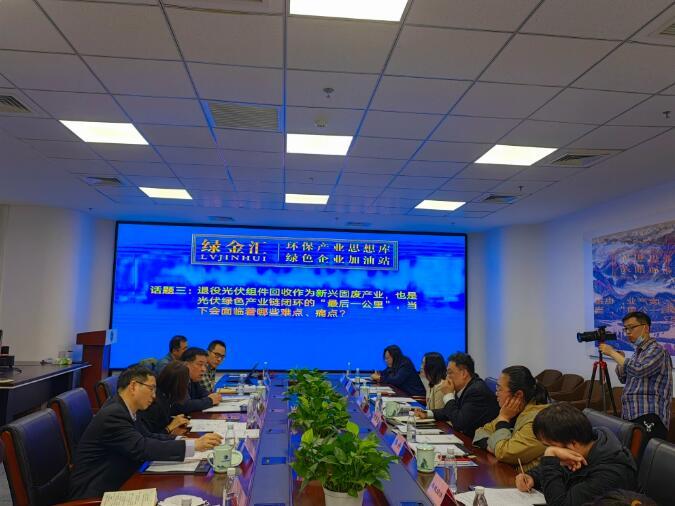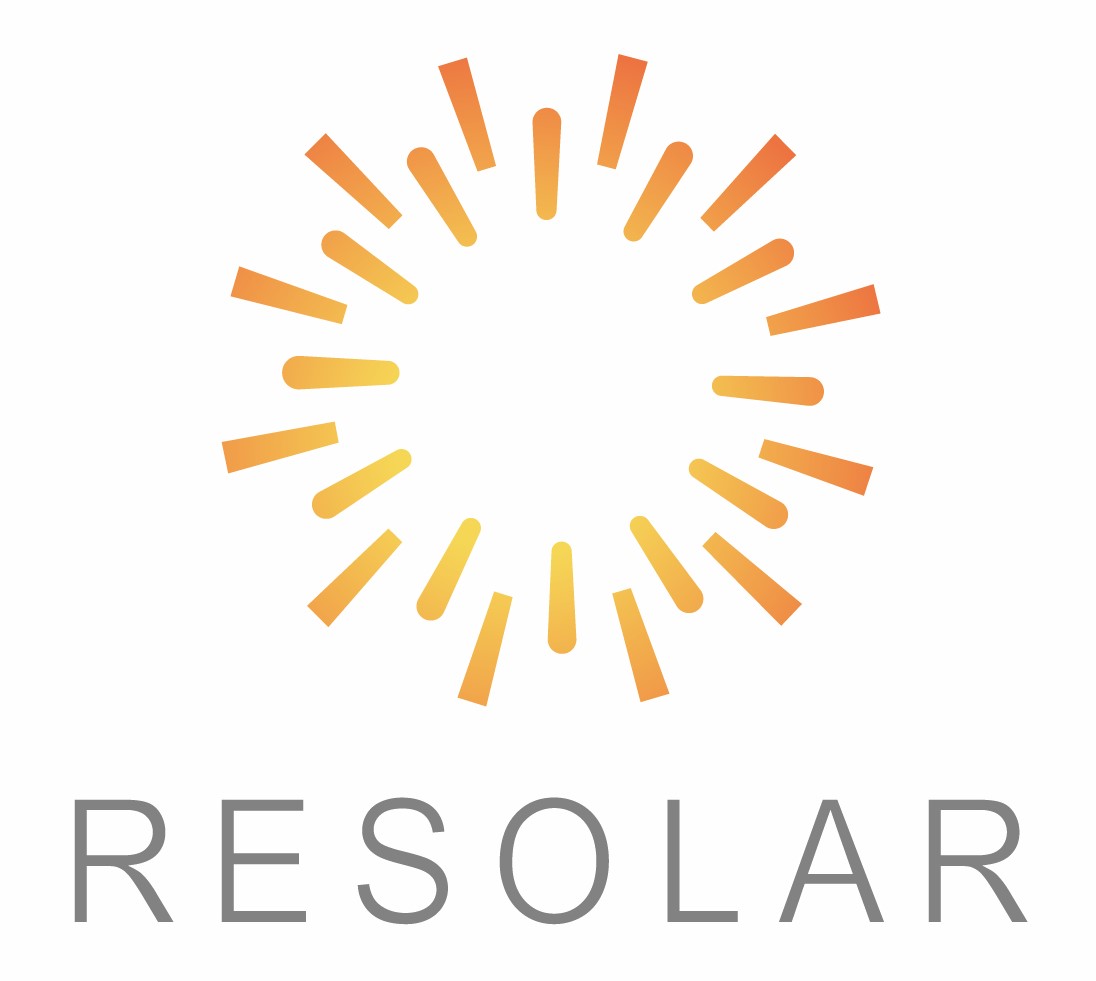News Center
—— NEWS CENTER ——
On April 27, at the Lujinhui Environmental Protection Industry Forum held by China Environment News, the guests discussed the theme of "How to get through the 'last mile' of the industrial chain through the recovery and recycling of decommissioned photovoltaics". China Green Supply Chain Alliance Photovoltaic Liu Limin, deputy secretary-general of the Recycling Industry Development Cooperation Center of the special committee, made the above statement.

However, in the current scrap disposal process of decommissioned photovoltaic modules, it is only disposed according to general solid waste, facing problems such as insufficient top-level planning and design, difficulty in obtaining recycling, cross-regional flow, and uneven technology of recycling companies, which directly leads to The commercialization of the decommissioned photovoltaic module recycling market is facing challenges.
Liu Limin introduced that in terms of economy, the current total income of recycling a standard-sized photovoltaic module is 8 USD, but the cost is 10.7 USD, and there will be a loss of 2.7 USD for recycling a piece of PV module .
Ten million tons of decommissioned photovoltaic materials recycling market is coming ahead of schedule: it will reach 20 million tons by 2040
In recent years, China photovoltaic power generation has shown a trend of rapid development. According to data from the National Energy Administration, in the first quarter of 2023, 33.66 million kilowatts of photovoltaics will be added to the grid nationwide, an increase of 154.8% year-on-year, of which 15.53 million kilowatts of centralized photovoltaic power generation and 18.13 million kilowatts of distributed photovoltaic power generation; as of the end of the first quarter of 2023, The installed capacity of photovoltaic power generation in the country reached 425 million kilowatts, including 249 million kilowatts of centralized photovoltaics and 176 million kilowatts of distributed photovoltaics.
China has become the world's largest photovoltaic application market. Photovoltaic components have a certain service life, generally 25-30 years. It has been more than ten years since China's first large-scale production of photovoltaics. With the large-scale application of photovoltaics, the decommissioning of photovoltaic modules has become the focus of social discussion.
Limin LIU introduced that a few years ago, the International Energy Agency predicted that by 2050, the global PV decommissioning will reach 80 million tons, and China will reach 20 million tons (accounting for a quarter). However, the predictions of some domestic institutions are different from those of the International Energy Agency. It is generally believed that China's photovoltaic module decommissioning wave will be further advanced. The Zero Carbon Research Institute predicts that by 2030, it will reach 1.4 million tons, and the output value will reach 13 billion. By 2040, it will reach 20 million tons, and the output value will reach 150 billion.
At the same time, Bingyan ZHOU, a researcher at the Chinese Academy of Environmental Sciences, believes that around 2007, the development of China's photovoltaic industry ushered in the first development climax. Judging from this, there may be a wave of photovoltaic module retirement around 2030.
In fact, with the continuous advancement of technology, more efficient photovoltaic equipment will replace the previous equipment, and the retirement of the original photovoltaic modules will be accelerated.
Dalong ZHONG, technical director of Beijing Low-Carbon Clean Energy Research Institute of China Energy Group, said that with the increasing tension of land resources, many companies are considering eliminating photovoltaic equipment that has less than 25 years of life and replacing it with more efficient components.
Dan LI, executive secretary-general of the Renewable Energy Professional Committee of the China Circular Economy Association, believes that the photovoltaic industry now has the need to "vacate the cage and change the bird". For example, the efficiency of modules in 2010 is far from the efficiency of today's modules, especially when the lighting conditions are good. , In areas with high power generation, the demand for replacement is greater.
Lose money and earn money? The development of the industry is hindered: Recycling a standard size PV module losses 2.7 USD
At present, the photovoltaic recycling industry is mainly dominated by small and scattered enterprises. The technical level of recycling enterprises is uneven, and the impact of the recycling process on the environment is also difficult to estimate.
Guiguang HOU introduced that in the whole process of recycling, from scrapping to storage, transfer, dismantling, smelting, and reuse, there is interaction with the environment, and whether the risk points are controlled is a difficult point. The tide of scrapping has not yet arrived, but the work on technology, standards, and management policies has just started, and there are many gaps, such as: during the smelting process, there are no special regulations on the discharge of compounds and related elements involved in scrapped photovoltaic modules; during the dismantling process , the risk management and control between centralized dismantling and the environment is in the exploratory stage, and relevant mature standards and regulations have not yet been issued.
In fact, in addition to the risk of photovoltaic recycling to the environment, the main problem hindering the development of the industry is the obstacle to commercial development.
In this regard, Dalong ZHONG introduced two aspects of the situation: on the one hand, it is very difficult to obtain the source. Module manufacturers sell photovoltaic panels to photovoltaic power stations. Many photovoltaic power stations are state-owned enterprises, and their assets are also state-owned assets. How to dispose of state-owned assets when decommissioning , Relevant departmental policies are not clear, so the process will not be smooth; on the one hand, waste photovoltaic modules are regarded as solid waste, and there are difficulties in the flow of new energy solid waste across regions. At present, many policies restrict the flow of solid waste across regions.
Limin LIU said that when conducting research on leading companies in the industry, they proposed to be economical, and investment institutions also paid more attention to the topic of economical. However, the current economy is relatively poor. The current total income of recycling a standard-sized photovoltaic module is 8 USD, but the cost is 10.7 USD, and there will be a loss of 2.7 USD for recycling a piece of PV module .However, this does not mean that it will not be economical in the future.
About RESOLAR
Shanghai RESOLAR Energy Technology Co., Ltd. is committed to becoming a recycled material photovoltaic group with deep decarbonization. RESOLAR focuses on technological innovation and builds a world-leading solution for component recycling, impurity removal of damaged cells, recycled silicon materials and cells, and cascaded utilization of components. With professional technology and services, we help customers realize the recycling and reuse of waste photovoltaic resources, and make positive contributions to the development of environmental protection and new energy industries. For more detailed information, you can browse the official website: www.resolartech.com .
Latest developments/news
Contact information
Service Hotline: 13585742918 (Monday to Friday 9:00-18:00)
Enterprise email: ps@resolartech.com (Reply within 48 hours after receiving the email consultation!)
Company Address: Building 8, No. 1528, Wangxu East Road, Fengjing Town, Jinshan District, Shanghai (Caohejing Fengjing Park)



